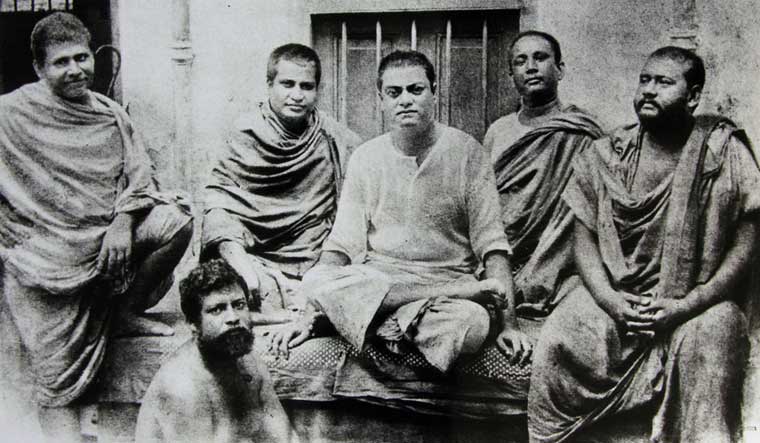Hathras in Uttar Pradesh is in news for the alleged gang-rape, and consequent death, of a dalit girl. Chief Minister Yogi Adityanath, too, is feeling the heat for the handling of the situation in the aftermath of the incident by the UP police.
The chief minister, who is a yogi, has been accused of not empathising with the victim's family. Interestingly, more than a century ago, another yogi had put Hathras on the map of humankind for an altogether different reason.
According to a researcher of Ramkrishna Mission, in 1887, a wandering penniless monk was sitting on a bench at the Hathras Junction station. He was on his way to Kolkata from Kashi. Hathras then had four railway stations—City, Junction, Kila and Road.
"The monk was travelling partly on foot, partly by train, partly by bullock cart, as Providence would provide. Suddenly, the ASM (assistant station master) of the station spotted this sanyasi with striking features, a sharp nose and wide eyes sitting on the bench," said the researcher.
He went up to him and struck up a conversation.
“Babaji. Why are you sitting here? Don't you want to go?" the ASM, Sharat Chandra Gupta, asked the man.
"Yes, I want t0,” replied the monk. “But where will I go? I have no idea. I am directionless."
The ASM offered him a tobacco pipe, which the monk accepted and took a couple of puffs. Gupta, who was a Bengali, found that the monk was understanding his Hindi, which had a thick Bengali accent, quite easily.
"Are you a Bengali?" he asked the monk.
"Yes, I am."
Impressed by his knowledge and disposition, Gupta requested the monk to be his guest that night and took him to his quarters behind the station, where the latter bathed and ate, and sang songs. The ASM was mightily impressed.
After spending a day or two, when the monk expressed his wish to leave, Gupta requested him to wait. The ASM rushed to the station, submitted his resignation and became the monk's disciple—the latter's first one, it is believed.
"The monk was none other than Narendranath Dutta, who later became Swami Vivekananda. And the ASM of Hathras Junction, after taking his vows, was called Swami Sadananda of the Ramakrishna Mission," said the researcher.
It's a fascinating story of a monk and his disciple. One can read more about them in the book, "The Life of Swami Vivekananda, by his Eastern and Western Disciples", by Advaita Ashrama.
Before accepting him as his disciple, Vivekananda, in a bid to test Gupta's earnestness, gave his begging bowl to Gupta and asked him to beg for food from the porters at the station.
"Without waiting for a moment, Sharat went to the station and begged for food from those very people who were his subordinates till the previous day," the researcher said. It was a sign that Gupta had renounced his ego and was ready to be Swami Sadananda.
He came back to Swamiji with the alms he collected and partook of them along with him.
Gupta withdrew all his money at once and left with Swami Vivekanda never to return to his large family. From Hathras, they boarded the train and went to Haridwar, cancelling their return to Calcutta.
Swami Sadananda travelled across the country and abroad, to spread the teachings of Swami Vivekananda. He died in 1911 in Kolkata.






